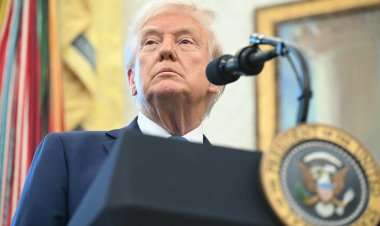A Strategy to Address the Stalemate Between Iran and the US
Numerous diverse interests hinge on the results of the negotiations between Washington and Iran.

The current phase of relations between the Islamic Republic of Iran and the United States represents a significant convergence: a revival of moderate leadership in Iran coincides with Donald Trump's presidency in the US, marking a reinvigorated faction within the Republican Party.
However, the nuclear issue, which had once been perceived as a primary source of contention between the two countries, has resurfaced as the central challenge following Trump's unilateral exit from the Joint Comprehensive Plan of Action (JCPOA) in 2018. While this matter serves as a convenient pretext for political discord, it is not inherently alarming due to its two-decade history; nonetheless, it remains the crux of tensions between Iran and the US.
A crucial starting point for analyzing the challenges in Iran-US relations involves evaluating the positions and interests of key stakeholders.
The Arab states in the region have adopted a notably softer and more welcoming demeanor towards Iran compared to the times of the JCPOA negotiations, its signing, and the subsequent US withdrawal. Relations between Iran and Saudi Arabia, the United Arab Emirates, and Bahrain—which were previously fraught for reasons that are not entirely understood—have developed into a state of cautious friendliness, if not outright warmth. Given their geographical proximity to Iran and their strong ties with the US, Europe, China, and Russia, this shift has significant implications for the policies of major powers concerning Iran's nuclear program.
Israel, in contrast, has consistently perceived any improvement in Iran's relations with the West, particularly the US, as a strategic red line. Throughout the JCPOA negotiations, its implementation under the Obama administration, and Trump's first term, Israel has made considerable efforts to undermine any proposed resolution to disputes involving Iran and the US, Europe, or even Arab states. For Israel, the core of the issue is at most secondary or even nonsensical; its utility lies in the potential to securitize Iran, isolating and pressuring it—a goal that Tel Aviv considers sufficiently achieved as long as this dynamic continues.
The European Union, despite being a large and diverse bloc of over 20 member states, generally follows the lead of France, Germany, and the UK in foreign policy, with two of these nations holding permanent seats on the UN Security Council. While these countries ostensibly advocate for diplomatic resolutions, their stance towards Iran has hardened significantly since the 2013-2018 period. Additionally, their tight control over the JCPOA's dispute resolution mechanism—known as the "snapback"—combined with transatlantic differences, has infused the issue with an identity-driven, Atlantic-spanning dimension. Consequently, while Western Europe is unlikely to take the lead on bold diplomatic initiatives, it retains the capacity to obstruct progress, particularly through the snapback mechanism, motivated in part by these identity-based considerations.
Russia emerges as another crucial player. As one of Iran's most important allies, having supported Tehran during sanctions, Russia plays a prominent role in Iran's near future, including in negotiations and their aftermath. Compared to the JCPOA negotiation period, Iran-Russia relations have evolved, while Moscow's relations with Washington have entered an unprecedented phase, shaped by the Ukraine conflict, Trump's desire to resolve it, personal rapport between the leaders, and tensions largely fueled by Washington's European allies. However, historically, Russia has not favored escalation of tensions between Iran and the West, nor does it benefit from their complete reconciliation. This duality implies that Iran's policymakers should strategically engage with Moscow, ensuring that Russia sees tangible benefits in supporting improved Iran-West relations—an outcome that is far from guaranteed and requires careful design.
China, among all the players surrounding Iran's nuclear issue and broader disputes with the West, stands as perhaps the most consistent yet distant in its declared positions. Beijing benefits from sanctions on Iran—albeit indirectly—while it also stands to gain from their removal, which would open a relatively untapped market for Chinese investors and contractors. Similar to Russia, China seeks to prevent increased tensions between Iran and the West but does not necessarily welcome excessive rapprochement, as this may heighten competition in Iran's market. For Iran to elevate China's role from mere political support to substantive economic and operational engagement, it must align any prospective agreement with Beijing’s interests.
Regional actors, such as Iran’s allies in West Asia—including resistance groups that are not merely proxies but long-standing anti-occupation movements—have never opposed a resolution of Iran’s disputes with the West. With the Axis of Resistance experiencing military setbacks over the past year, one of the West’s—particularly Israel’s—main justifications for challenging Iran’s regional role has effectively diminished.
Before commencing recent negotiations, both Iran and the US employed a blend of diplomatic offerings and implicit threats in a carrot-and-stick approach. However, clinging to outdated tactics will not yield innovative solutions in global politics. Western actors, in particular, must recognize that Iranian policymakers, seasoned by over four decades of navigating a nation under pressure, advancing its development, and addressing critical regional and international crises, are unlikely to be intimidated into a weaker negotiating stance by familiar threats. Such tactics might instead undermine the West’s credibility—and that of the Trump administration specifically—in pursuing a balanced diplomatic resolution.
This analysis suggests the following actionable recommendations to ensure pragmatic and constructive discussions:
1. The US should unify its internal stance to prevent differing voices from undermining the progress made.
2. Both parties need to move away from traditional threat-based posturing to enhance negotiation leverage, instead emphasizing a clear commitment to peaceful, diplomatic resolutions.
3. Trump must limit Israel’s ability to derail any initiative he supports, using his influence as a key ally.
4. The US should coordinate with its European allies to avoid their statements or actions from hindering resolution efforts.
5. Iran should engage with Russia, China, and Europe to reduce unnecessary friction and secure meaningful collaboration.
6. Regional Arab states should be involved in reducing tensions and promoting a “strong region” paradigm, moving beyond a singular “strong state” focus.
7. The International Atomic Energy Agency’s positive capability should be utilized to compartmentalize issues, ensuring unrelated matters do not derail potential agreements.
If these steps are pursued with strategic foresight, they could pave the way for a sustainable resolution to a decades-long impasse.
Emily Johnson for TROIB News












